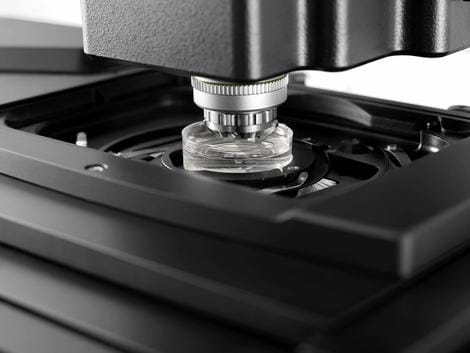Leica integrates Digital Light Sheet and Confocal Microscopy in the Leica TCS SP8 DLS

Leica Microsystems will present the TCS SP8 DLS in the ELMI meeting 2015 in Sitges, Spain. With the introduction of the TwinFlect Mirror, Leica has transformed the True Confocal System (TCS) SP8 into a Digital Light Sheet (DLS) microscope. This innovative approach allows researchers to stick to classical methods of sample preparation and retains the high resolution of confocal imaging while introducing the possibility of a more gentle illumination of light-sensitive samples and the observation of fast live processes in 3D.
Light Sheet Microscopy illuminates the specimen in a single plane, avoiding the phototoxic effects of out-of-focus excitation and increasing sample safety in long-term observations. It also allows for 3D stacking of the specimen by scanning it with the light sheet. Tipically, it relies on two independent, perpendicular illuminating and detecting objectives, which compromises confocal functionality. The addition of the TwinFlect mirror solves this problem by deflecting the illuminating light sheet at a 90° angle; the beam path of both objectives can therefore be lined up in a vertical axis.
Additional applications and functionality
The TwinFlect mirror brings additional advantages to DLS microscopy : easier sample handling, multi-position experiments, illumination from two sides to avoid dark regions and tracking of very fast periodic movements with high resolution; among others. The systems includes the workflow-oriented Leica Application Suite (LAS-X) software. Optional add-ons like Stimulated Emission Depletion (STED) super-resolution, advanced lasers, climate chamber and multiphoton or quantitative imaging can be added whenever required.
